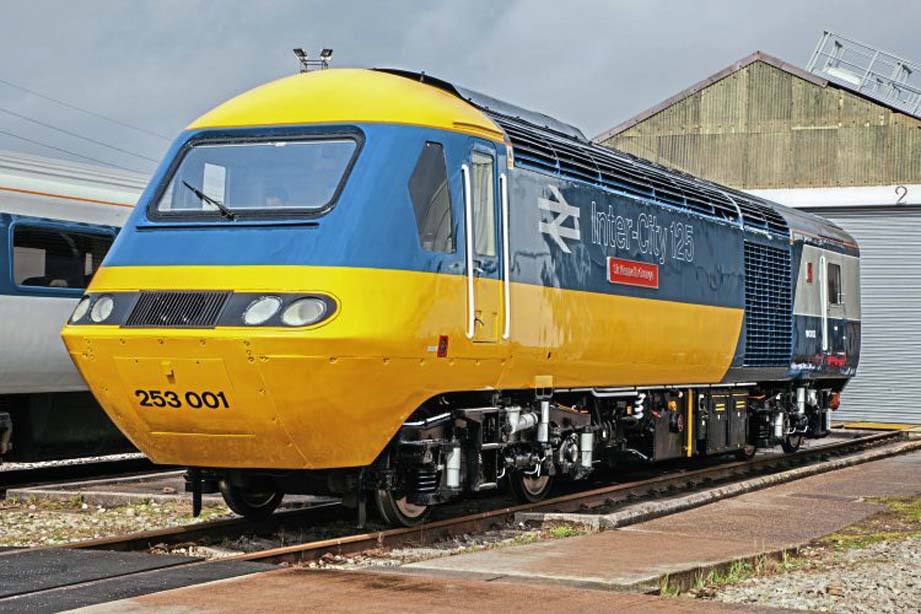

The Class 43, or the High Speed Train (HST) as it is more commonly known, has been a ubiquitous sight on Britain's railways for over 40 years.
All good things must come to an end however, and the HST is about to retire from the East Coast Main Line (although they will be staying for a little while longer on the Midland Mainline, in Scotland, and on routes to Cornwall).
The HST also happens to still hold the record for the world's fastest diesel train, a record unbeaten since 1987.
But any train can be fast.
What makes this one so special I felt the need to write a whole article about it?
Well, aside from being called Britain's favourite locomotive, it's also my favourite train.
Here's why.
It Looks Fantastic
Sleek, aerodynamic, instantly recognizable.
Ask anyone to draw a picture of a train and chances are, it's going to look vaguely identifiable as an HST.
The man responsible, Sir Kenneth Grange, was given a brief to design the livery of the new train.
Not one to miss an opportunity however, Grange decided to redesign the whole power car and successfully persuaded British Rail to adopt the now iconic design.
It Literally Changed Rail Travel in Britain
The HST was initially intended as a stop-gap solution (just like the distinctly non-high-speed Pacers that dominate the north).
However, it instantly proved a hit with passengers.
The last serious attempt at developing a high-speed intercity train had resulted in frequent breakdowns and passengers complaining of nausea, so by the 1970s, British Rail was almost universally hated and facing serious financial trouble.
From 1976, the HSTs began running on the Western Region routes from London Paddington.
Towns such as Swindon and Didcot began to transform into commuter towns, as job opportunities in London became far more accessible.
Business travellers could now easily hop between cities in a single day in comfort.
Plug sockets, and large armchair like seats turned the train into a comfortable office, travelling at 125 mph.
Former British Rail chairman Peter Parker proclaimed, "Within ten years, the number of passenger journeys on the Inter-City routes had increased by 30 percent, proving that people react dramatically and positively to faster, more comfortable, services."
Train nerd tip, most train operators reconfigured the internal layout over the years to squeeze in more passengers.
East Midlands Railway still operate HSTs with the original generous legroom (and the British Rail logo etched into the bathroom mirrors, which I have definitely not taken a selfie in).
It Has Distinctive Branding
There's no use having a great product if no one knows about it.
Thankfully, British Rail ran an extensive marketing campaign to promote "The Age of the Train".
Unfortunately, one particular strand happened to be fronted by Jimmy Saville, so it's probably best we just say it was effective at the time and leave it there.
(Editor: A well-known British television personality who was a predatory child sex abuser and rapist.)
What is worth watching however, is a fantastic video featuring an HST, a "police train", and a scantily clad woman (yes, really).
Slightly bizarre for sure, but definitely memorable.
Of course, the launch of the HST was also promoted with a series of eye-catching posters featuring bright colours and simple text.
One such example heralded the arrival of "The Journey Shrinker", now running between London and Edinburgh, which cut journey times by a full hour.
Now you may think I'm being nostalgic (I admit it, I am).
But there is no sight quite as distinctive, nor sound quite as pleasing, as the roar of a Valenta engine HST.
Maybe it's because I binge-watched Thomas the Tank Engine every day as a child, but I can't help but feeling the modern Pendolinos, Azumas, and Aventras lack personality.
Of course, I hope to be proven wrong that there will be another train which is equally revolutionary as the HST.
For now though, I'll be making some more trips to the National Railway Museum in York to see the HST in all its glory.
Marian Craig.
(because there was no image with original article)
*2. Original news article image replaced.
(usually because it's been seen before)
under the provision in Section 29
of the Canadian Copyright
Modernization Act.









